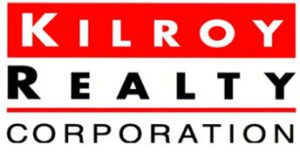Share This
Related Posts
Tags
Leveraging Energy Data
By Erica Rascón on Jul 31, 2018 in Energy, News
Kilroy Realty Corporation (NYSE: KRC) continues to normalize green leasing in-house and across the industry.
The Los Angeles-based company builds each of its properties to a minimum of LEED Gold Certification and has won numerous awards for sustainability across its existing 13.9 million square foot portfolio.
Sara Neff, MBA, LEED AP, Senior Vice President of Sustainability at KRC, is one of the thought leaders behind the innovative sustainability programs at KRC and in the commercial real estate industry. She’s been a driving force creating and deploying the BOMA W2 Challenge, a new initiative built with the support of a generous grant from Yardi, and in partnership with the BOMA Local Associations, that can lead to cost savings on water and waste for countless organizations.
Neff spoke on the W2 Challenge and its benefits during a BOMA International webinar this summer with panelists from Yardi and LaSalle. The session “Reducing Water and Waste Starts with Data” explored how KRC and LaSalle have optimized the efficiency of their assets with the use of utility data analytics. The W2 program gives organizations the basic tools needed to do the same.
Benefits of Benchmarking
Benchmarking has helped KRC surge ahead of industry norms in several ways. Utility benchmarking is becoming more popular: state, regional, and local regulations are starting to require it, tenants are looking for more efficient buildings to lease, and investors are seeing the value and profitability.
Reducing water, waste, electricity, carbon footprints, greenhouse gasses, and emissions is becoming more than environmental – it’s now political. And policies from city governments, like the NYC Mayor’s Carbon Challenge, and state legislators, like California’s Assembly Bill 802, are becoming more common across the U.S. and mean serious business. Noncompliant owners and buildings are fined or placed on a publicized list. By adopting resource tracking measures early on, the organization and its legal team are better prepared to comply to benchmarking requirements.
Lenders also look at ENERGY STAR scores as a measure of how well a building is being operated, so even businesses in locations that do not require benchmarking benefit from doing so. Neff encourages companies to get started with benchmarking as soon as possible.
“Investors are looking for data coverage and benchmarking. It’s better to at least have the data gathered and organized even if you can’t show mind-blowing results in the first years,” she says. Organizations can gain access to greater capital for growth by demonstrating that buildings are operated efficiently.
Benchmarking can even effect occupancy rates and leasing rates. In LA, Neff explains, class B buildings with ENERGY STAR certifications lease at higher rates than class A buildings without certification. Certified buildings also experience higher occupancy rates.
Energy benchmarking has become a critical component of growth because it can also lower overhead costs. Neff recalls how an exterior leak could have cost the company thousands.
Neff says, “Benchmarking is how we found exterior leaks. We have really good detection systems in the  interiors of our buildings. But boy, if you have a leak in the exterior, a drip irrigation line that’s buried, good luck figuring out that is happening! The only way to do that currently is through water benchmarking.”
interiors of our buildings. But boy, if you have a leak in the exterior, a drip irrigation line that’s buried, good luck figuring out that is happening! The only way to do that currently is through water benchmarking.”
She continues, “We had a building that had a 25 percent increase in water that quarter compared to the previous year. It’s something that could’ve gone on for months and months. It’s not just the cost. It’s the damage to the area: the integrity of the foundation, the soil, the plants, and nobody knew.”
KRC noticed a change in waste diversion at a different property. “One building dropped precipitously in its diversion but it was the same number of pickups,” Neff begins. “Nothing changed about the service schedule and we couldn’t figure out why the data was changing.”
It turns out that the recycling was contaminated….with spaghetti. “A tenant would have regular spaghetti parties and dump the remains into the recycling bin because it was the closest. We started fining the tenant; the leases allowed us to do that. The tenant took on the brunt of the changes in cost between cost of the recycling which was free and the trash which was not.”
Organizations can use benchmarking as a tool for acknowledging employee and tenant accomplishments. When goals are set and reached, teams receive recognition for their efforts, which builds morale and company loyalty.
Tenants that reach milestones can use the achievement in marketing. KRC discovered that a building in its portfolio was eligible for Zero Waste certification, meaning that that site diverts 90 percent of its waste or more. Neff recalls that the site was at 88 percent efficiency a few months ago and has taken strides to achieve the final two percent. Post-sorting is one tool that helps the site achieve maximum efficiency. Once achieved, the Zero Waste site will be more appealing to investors and tenants.
A class A building within the KRC portfolio reduced its water use by 30 percent. “They turned off all of their irrigation and let [the lawns] go brown” Neff says. “They said ‘It was good marketing for the tenant. We are in a drought. Having a lush, green lawn made us look terrible. We wanted to show that we were doing our part. Once we let the lawn go brown, we started getting praise from the tenants.’” It was a risk that turned into a great best practice shared by other local businesses.
Tips for Getting Started with Benchmarking
The W2 challenge is a great way for organizations to step into sustainable leasing. The two-year challenge encourages participants to use ENERGY STAR benchmarking tools to track, gather, and analyze water and waste data. In addition to reaping the rewards of efficiency, the most successful buildings will be invited to share best practices and participate in case studies.
 More than 1,800 buildings are participating in W2 Challenge this year, with registration open to other interested parties. There are no restrictions on building types or sizes, and the competition is open to all building sectors. Though the competition officially started January 1, 2018, new registrants are still welcome. You’ll track data for all of 2018 to establish a baseline the first year and Year 2 will promote performance improvements.
More than 1,800 buildings are participating in W2 Challenge this year, with registration open to other interested parties. There are no restrictions on building types or sizes, and the competition is open to all building sectors. Though the competition officially started January 1, 2018, new registrants are still welcome. You’ll track data for all of 2018 to establish a baseline the first year and Year 2 will promote performance improvements.
Before diving into the W2 Challenge or any benchmarking endeavors, Neff has two recommendations:
Be sure to track sewer separately. “When achieving a specific ROI is important, adding the sewer cost in will over inflate the cost of your water. It’s a base cost. Even if you could reduce your water by 90 percent, you’re still going to pay that. Track it and keep it separate so that when you’re trying to do a payback on an irrigation project or something you don’t include it when you’re doing your math.”
Solutions like Yardi Utility Expense Management can help streamline payables and help you capture the data you need for benchmarking. Invoices are tracked and processed electronically, ensuring timely payment which reduces late fees. During automated processing, the image is captured along with the line-item details from the invoice, which can be pulled into reporting for benchmarking. Learn more about the additional solutions included in the Yardi Smart Energy Suite including tenant submetering and utility billing, real-time building energy management with HVAC optimization, artificial intelligence, scheduling, and alerts, and procurement for deregulated markets.
Secondly, Neff indicates that water and waste benchmarking is a great way to get legal to support other sustainable initiatives throughout the company. “Benchmarking ordinances are a great way to introduce the concept of green leasing to your legal team. If you’re going to have to comply anyway or be subject to fine, or be published in a list of buildings that are non-compliant, it’s a good opportunity to engage your legal team in green leasing. It’s a great way to put your foot in the door and ask for the other stuff you may have wanted.”
Learn more about the BOMA W2 challenge and register today.

